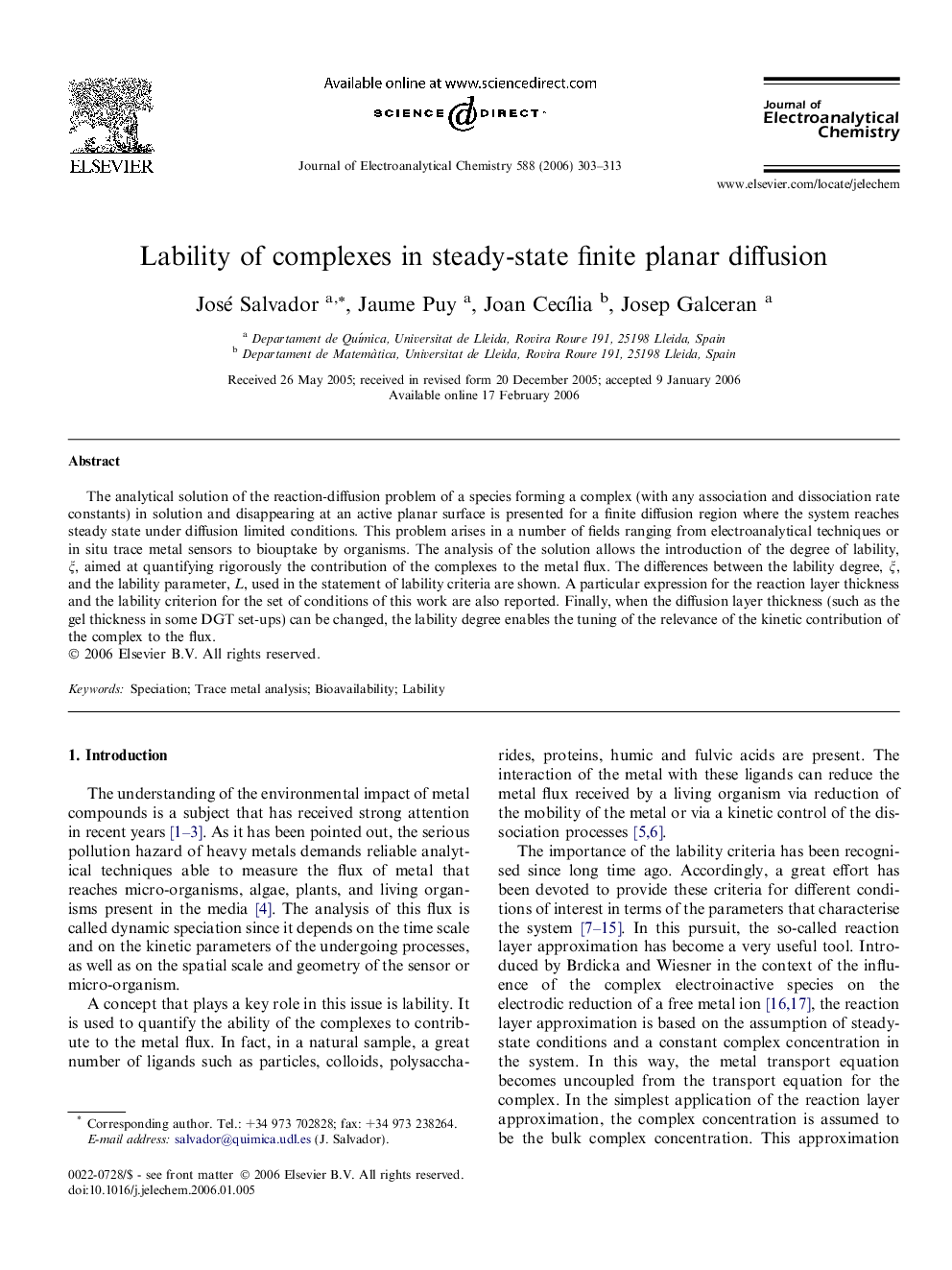| Article ID | Journal | Published Year | Pages | File Type |
|---|---|---|---|---|
| 221418 | Journal of Electroanalytical Chemistry | 2006 | 11 Pages |
The analytical solution of the reaction-diffusion problem of a species forming a complex (with any association and dissociation rate constants) in solution and disappearing at an active planar surface is presented for a finite diffusion region where the system reaches steady state under diffusion limited conditions. This problem arises in a number of fields ranging from electroanalytical techniques or in situ trace metal sensors to biouptake by organisms. The analysis of the solution allows the introduction of the degree of lability, ξ, aimed at quantifying rigorously the contribution of the complexes to the metal flux. The differences between the lability degree, ξ, and the lability parameter, L, used in the statement of lability criteria are shown. A particular expression for the reaction layer thickness and the lability criterion for the set of conditions of this work are also reported. Finally, when the diffusion layer thickness (such as the gel thickness in some DGT set-ups) can be changed, the lability degree enables the tuning of the relevance of the kinetic contribution of the complex to the flux.
